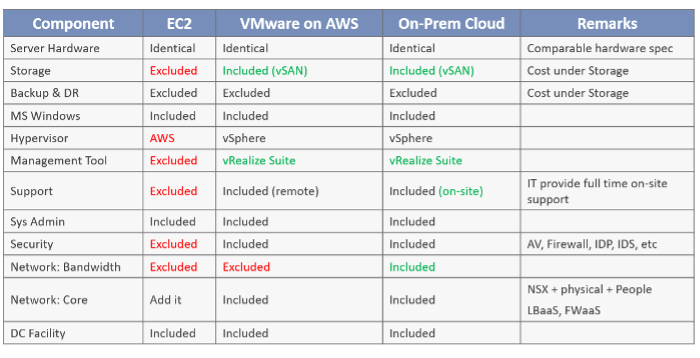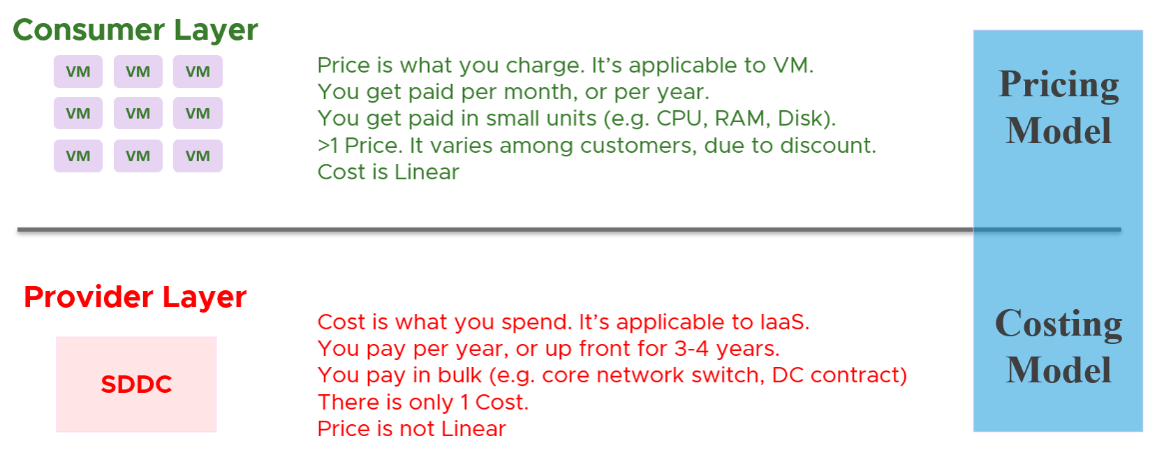1. Dare to Compare
In the cloud era, application teams today are provided with more choice of infrastructure. All they need is a credit card and application development can start. No need to deal with internal red tape just to get a bunch of hardware, since they are all available as an on-demand service.
By, the public cloud providers are competitors to internal on-prem cloud. As an internal cloud provider, you need to turn the public cloud providers into allies. That requires a shift in your business model, from infrastructure provider to a multi-cloud service broker. You broker the request for infrastructure with the most appropriate provider. You evaluate, choose and deliver multiple clouds if the on-prem cloud does not meet the business needs. Even the on-prem cloud can be a service that you procure (meaning you do not own the hardware and software), if that fits your business requirements better.
It is indeed possible for a small and no-frill internal IT infrastructure team to complement a much larger cloud provider. Being small, especially since you are on-site and work in the same company, enables you to offer a better service. Nobody likes dealing with the bureaucrazy, pun intended, of a large corporation’s support organization. You can get lost in the policy.
You also need to do an apple-to-apple comparison. List the entire components of the service. The following table provides an example, where you add your private cloud alongside externally hosted cloud. You should complement this table with another table comparing the SLA and price. I’ve provided a sample of SLA table in the Capacity Management section.

Cost and Price are related but different. Price is what your customers care as that’s what they pay. If you increase your prices too high because your costs are high, your customers will just move to public cloud.
Be consistent with the terminology. What is Price to you is Cost to your customer. It’s easier to use the term price when describing cost to your customers. Otherwise, you can get mixed up, such as demonstrated in the following sentence: “Cluster with plenty of capacity is more expensive as the cost is only shared by few VMs”.
What that sentence meant is Cost per VM, which is a hypothetical cost as you do not incur that cost.
You need to develop both the Pricing Model and the Cost Model, ideally at the same time.

Let’s look at price first, as we need to start with the customer.
This page was last updated on June 29, 2021 by Stellios Williams with commit message: "Fixed non-ascii double quotes"
VMware and the VMware taglines, logos and product names are trademarks or registered trademarks of VMware in the U.S. and other countries.